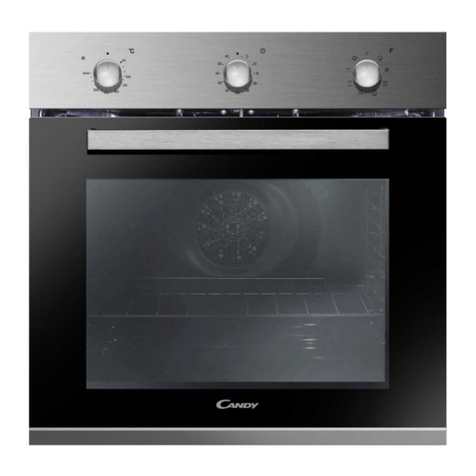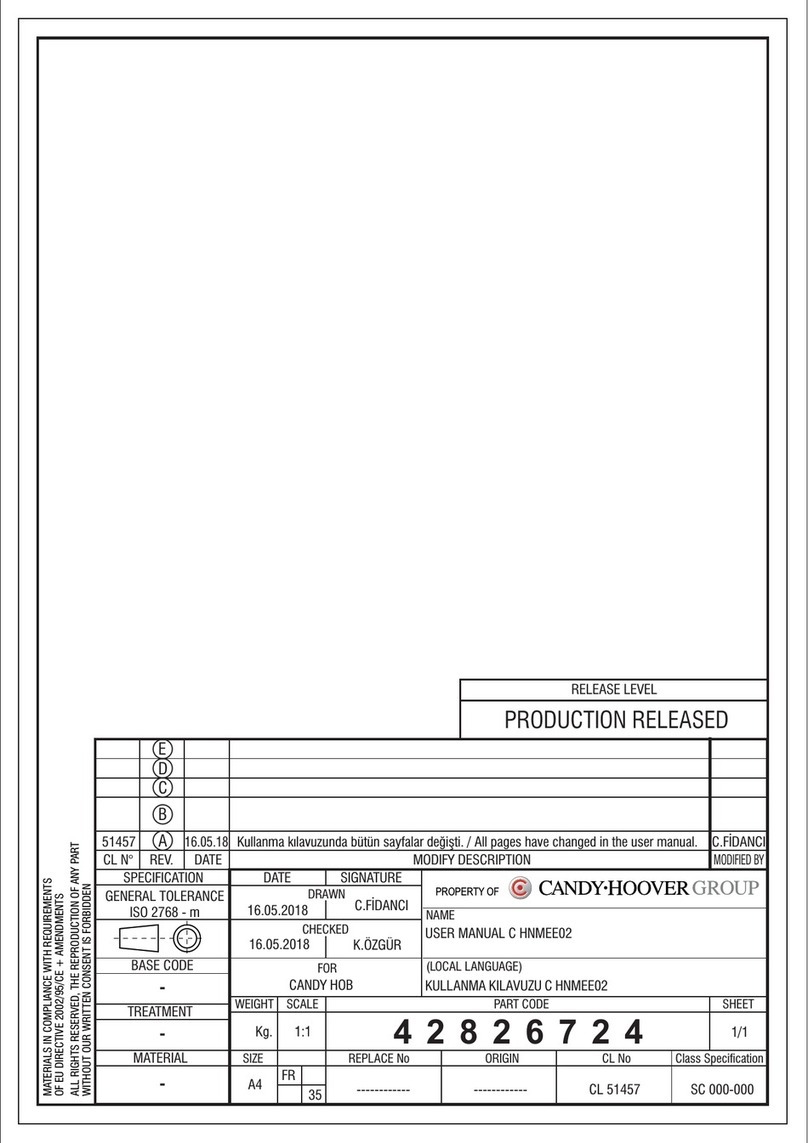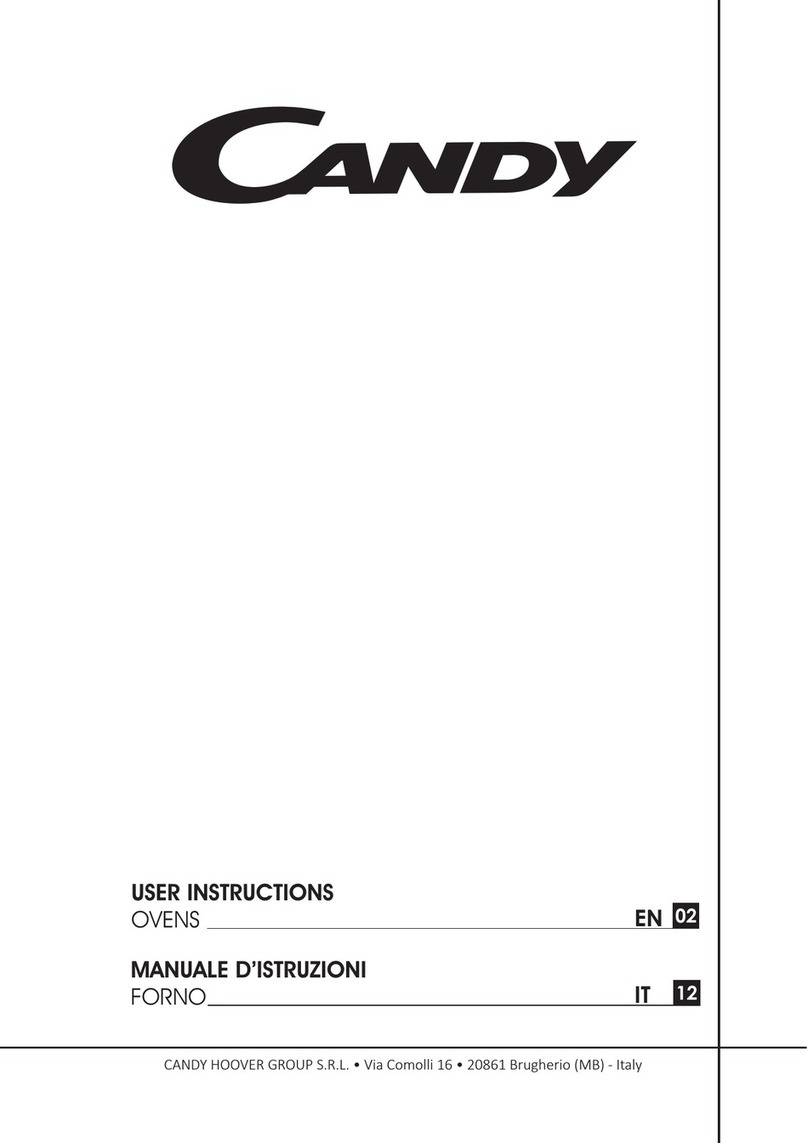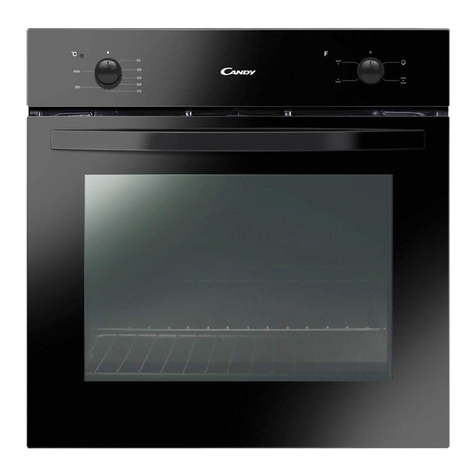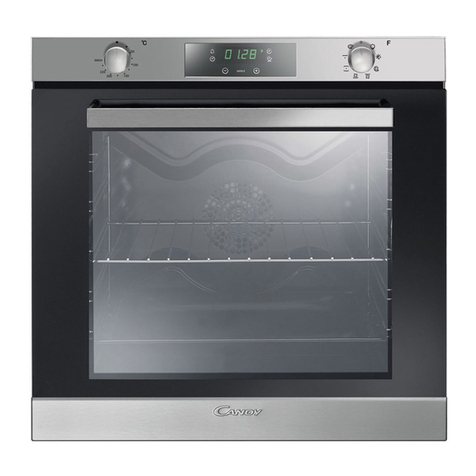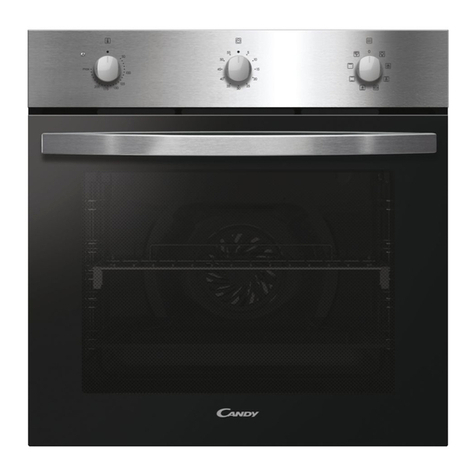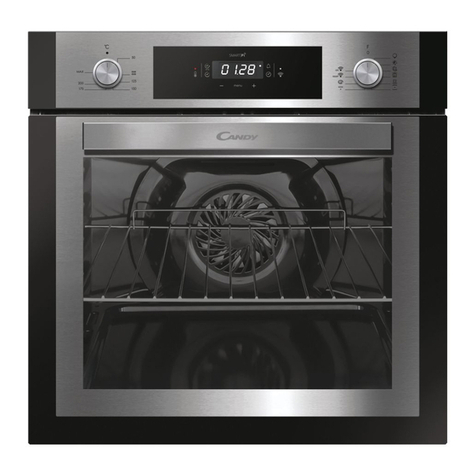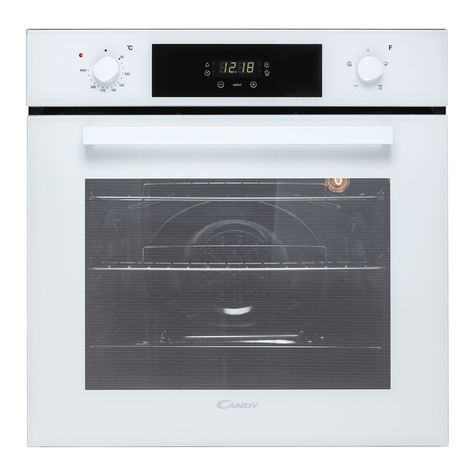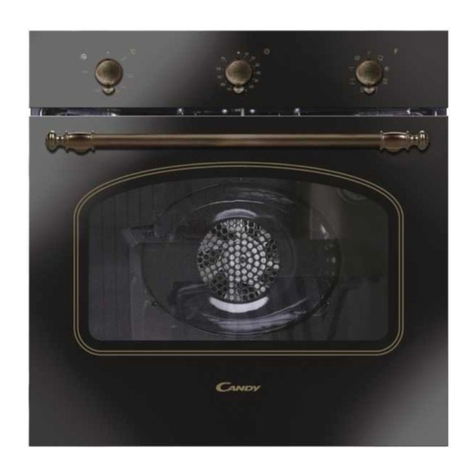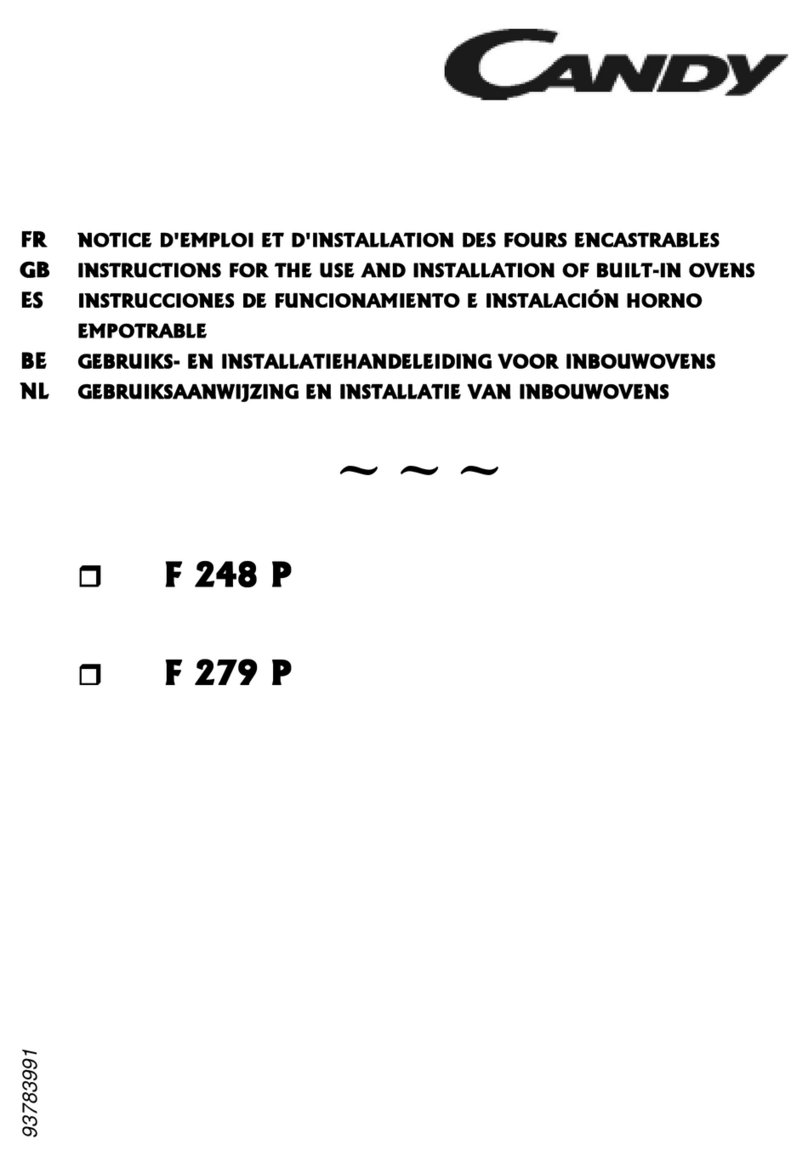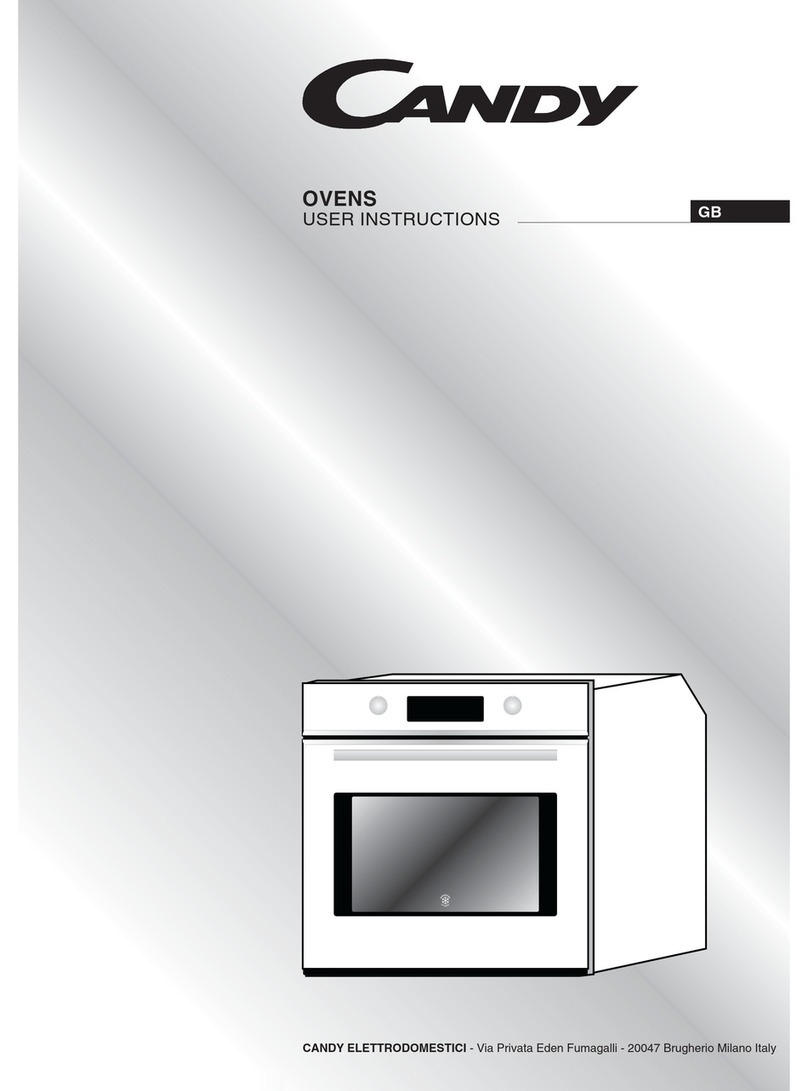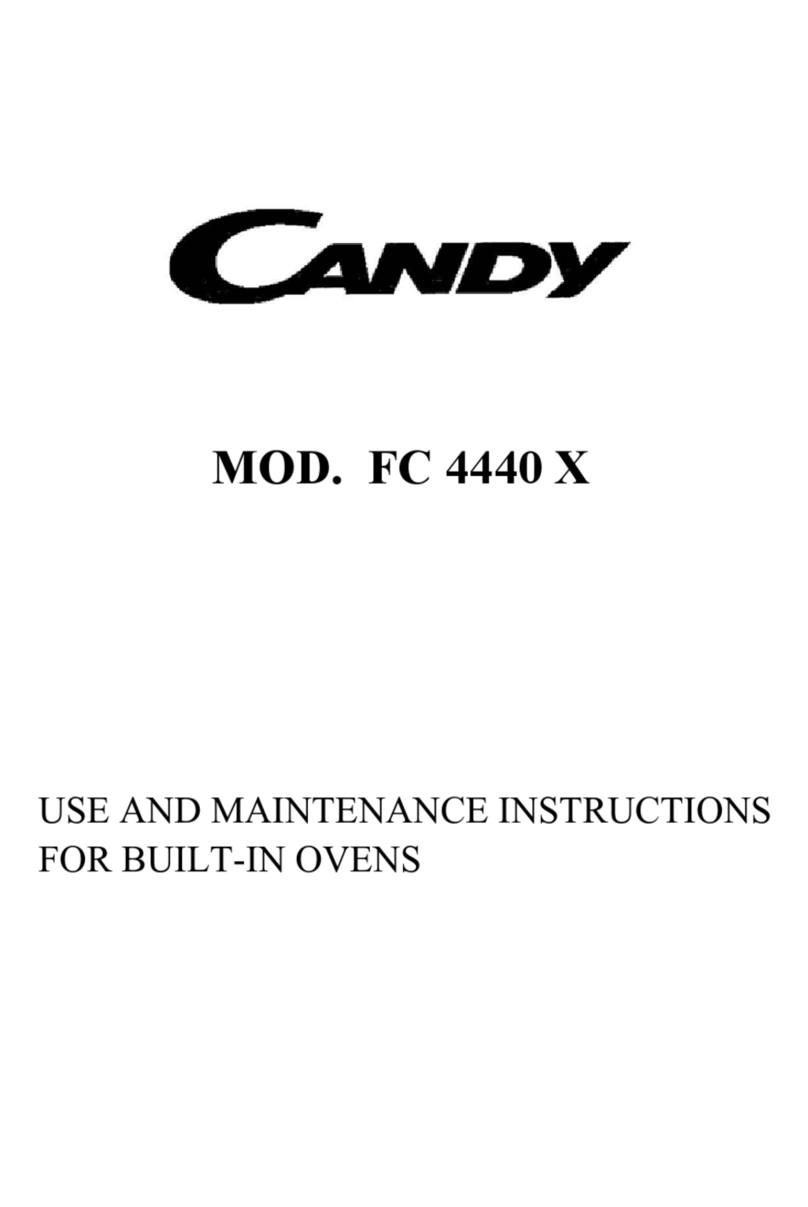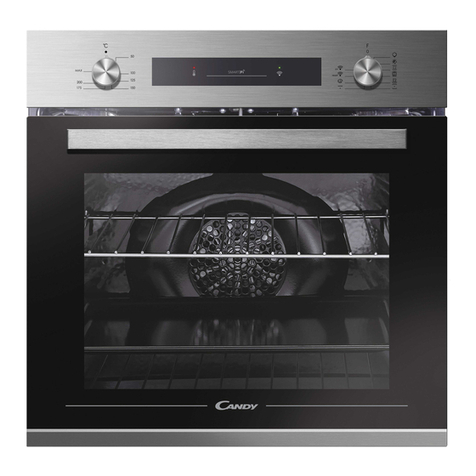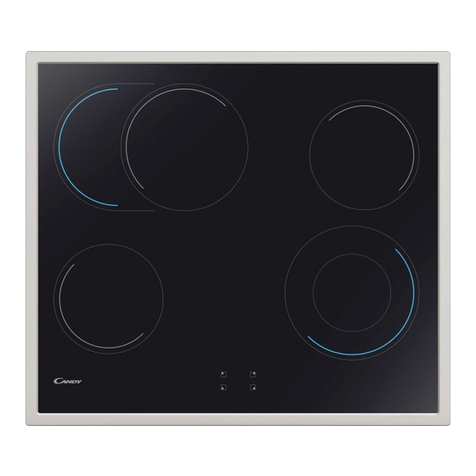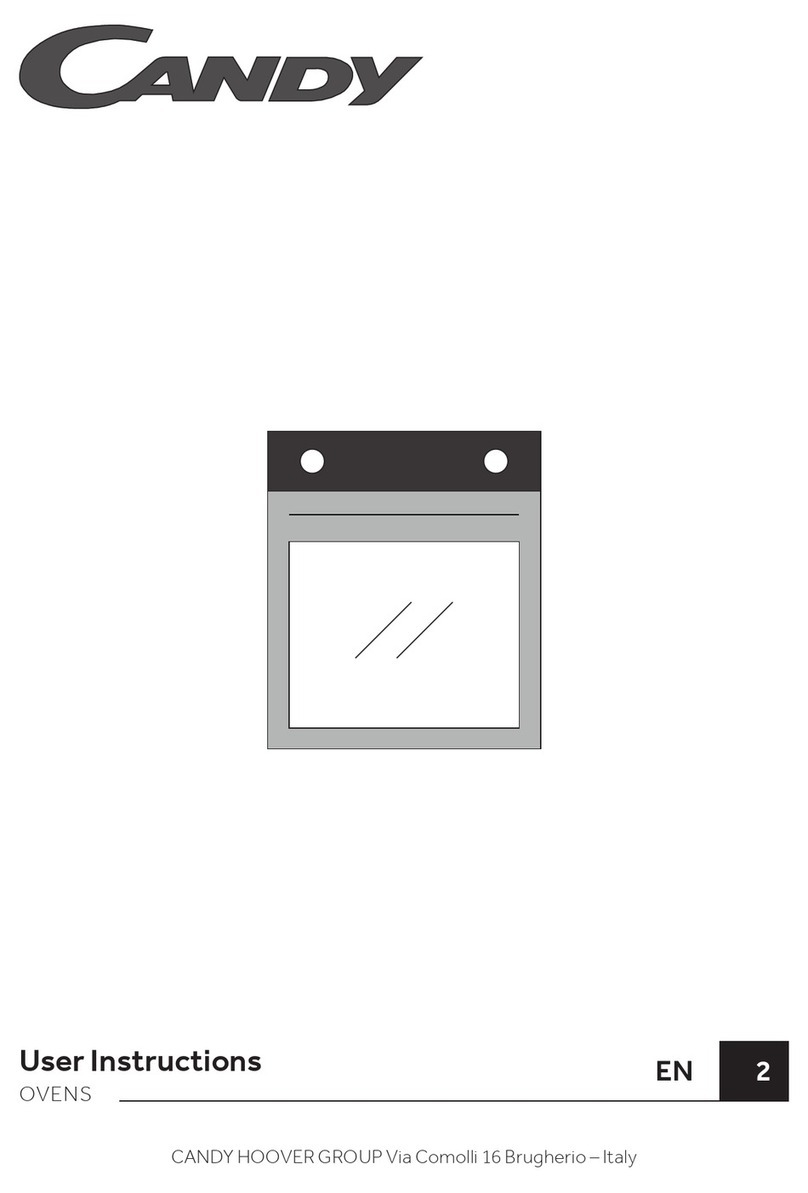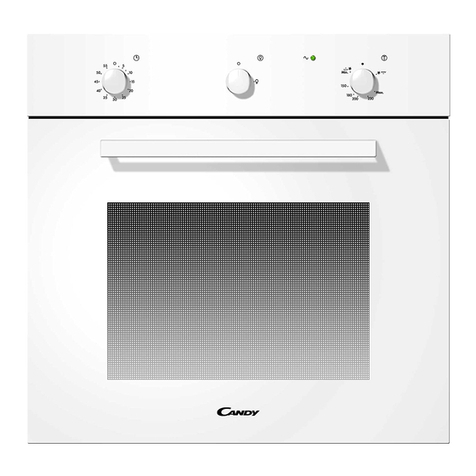
1. General Instructions
We thank you for choosing one of our products. For the best results with your oven, you should read
this manual carefully and retain it for future reference. Before installing the oven, take note of the serial
number so that you can give it to customer service staff if any repairs are required. Having removed the
oven from its packaging, check that it has not been damaged during transportation. If you have doubts,
do not use the oven and refer to a qualified technician for advice. Keep all of the packaging material
(plastic bags, polystyrene, nails) out of the reach of children. When the oven is switched on for the first
time, strong smelling smoke can develop, which is caused by the glue on the insulation panels
surrounding the oven heating for the first time. This is absolutely normal and, if it occurs, you should
wait for the smoke to dissipate before putting food in the oven. The manufacturer accepts no
responsibility in cases where the instructions contained in this document are not observed.
NOTE: the oven functions, properties and accessories cited in this manual will vary, depending on the
model you have purchased.
1.1 Safety Indications
Only use the oven for its intended purpose, that is only for the cooking of
foods; any other use, for example as a heat source, is considered improper
and therefore dangerous. The manufacturer cannot be held responsible for
any damage resulting from improper, incorrect or unreasonable usage.
The use of any electrical appliance implies the observance of some
fundamental rules:
- do not pull on the power cable to disconnect the plug from the socket;
- do not touch the appliance with wet or damp hands or feet;
- in general the use of adaptors, multiple sockets and extension cables is not
recommended;
- in case of malfunction and/or poor operation, switch off the appliance and
do not tamper with it.
1.2 Electrical Safety
ENSURE THAT AN ELECTRICIAN OR QUALIFIED TECHNICIAN MAKES THE
ELECTRICAL CONNECTIONS. The power supply to which the oven is
connected must conform with the laws in force in the country of
installation. The manufacturer accepts no responsibility for any damage
caused by the failure to observe these instructions. The oven must be
connected to an electrical supply with an earthed wall outlet or a
disconnector with multiple poles, depending on the laws in force in the
country of installation. The electrical supply should be protected with
suitable fuses and the cables used must have a transverse section that can
ensure correct supply to the oven.
CONNECTION
The oven is supplied with a power cable that should only be connected to
an electrical supply with 220-240 Vac 50 Hz power between the phases or
between the phase and neutral. Before the oven is connected to the
electrical supply, it is important to check:
- power voltage indicated on the gauge;
- the setting of the disconnector.
The grounding wire connected to the oven's earth terminal must be
connected to the earth terminal of the power supply.
WARNING
Before connecting the oven to the power supply, ask a qualified electrician
to check the continuity of the power supply's earth terminal. The
manufacturer accepts no responsibility for any accidents or other
problems caused by failure to connect the oven to the earth terminal or by
an earth connection that has defective continuity.
NOTE: as the oven could require maintenance work, it is advisable to keep
another wall socket available so that the oven can be connected to this if it
is removed from the space in which it is installed. The power cable must
only be substituted by technical service staff or by technicians with
equivalent qualifications.
1.3 Recommendations
After each use of the oven, a minimum of cleaning will help keep the oven
perfectly clean.
Do not line the oven walls with aluminium foil or single-use protection
available from stores. Aluminium foil or any other protection, in direct contact
with the hot enamel, risks melting and deteriorating the enamel of the insides.
In order to prevent excessive dirtying of your oven and the resulting strong
smokey smells, we recommend not using the oven at very high temperature. It
is better to extend the cooking time and lower the temperature a little. In
addition to the accessories supplied with the oven, we advise you only use
dishes and baking moulds resistant to very high temperatures.
1.4 Installation
The manufacturers have no obligation to carry this out. If the assistance of the
manufacturer is required to rectify faults arising from incorrect installation,
this assistance is not covered by the guarantee. The installation instructions
for professionally qualified personnel must be followed. Incorrect installation
may cause harm or injury to people, animals or belongings. The manufacturer
cannot be held responsible for such harm or injury.
The oven can be located high in a column or under a worktop. Before fixing,
you must ensure good ventilation in the oven space to allow proper
circulation of the fresh air required for cooling and protecting the internal
parts. Make the openings specified on last page according to the type of
fitting.
1.5 Waste management and environmental protection
This appliance is labelled in accordance with European Directive
2012/19/EU regarding electric and electronic appliances (WEEE). The
WEEE contain both polluting substances (that can have a negative effect on
the environment) and base elements (that can be reused). It is
important that the WEEE undergo specific treatments to
correctly remove and dispose of the pollutants and recover all
the materials. Individuals can play an important role in
ensuring that the WEEE do not become an environmental
problem; it is essential to follow a few basic rules:
- the WEEE should not be treated as domestic waste;
- the WEEE should be taken to dedicated collection areas managed by the
town council or a registered company.
In many countries, domestic collections may be available for large WEEEs.
When you buy a new appliance, the old one can be returned to the vendor
who must accept it free of charge as a one-off, as long as the appliance is of
an equivalent type and has the same functions as the purchased appliance.
SAVING AND RESPECTING THE ENVIRONMENT
Where possible, avoid pre-heating the oven and always try to fill it. Open
the oven door as infrequently as possible, because heat from the cavity
disperses every time it is opened. For a significant energy saving, switch off
the oven between 5 and 10 minutes before the planned end of the cooking
time, and use the residual heat that the oven continues to generate. Keep
the seals clean and in order, to avoid any heat dispersal outside of the
cavity. If you have an electric contract with an hourly tariff, the "delayed
cooking" programme makes energy saving more simple, moving the
cooking process to start at the reduced tariff time slot.
EN 05
